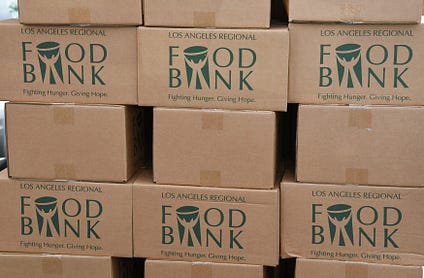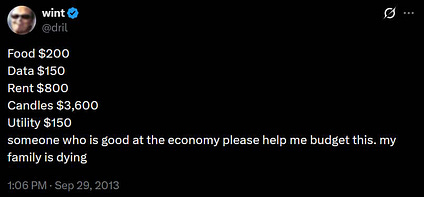Burundi microfinance program: Get up and walk! – News – Church of the Brethren

Program Overview: The “Get Up and Walk” Microfinance Initiative
The Church of the Brethren in Burundi has established a microfinance program, “Get Up and Walk,” operating under its “Brethren Bank.” This initiative is designed to combat poverty and foster economic independence by providing micro-capital to individuals for small enterprise investment. In its first two years, the program has grown to include 62 participants, directly addressing key Sustainable Development Goals (SDGs), particularly SDG 1 (No Poverty) and SDG 8 (Decent Work and Economic Growth).
Operational Framework and Contribution to Economic Growth (SDG 8)
Loan Structure and Scalability
The program employs a tiered loan structure that encourages financial discipline and allows for business growth. This model provides accessible capital for enterprises such as market stalls, stores, and tailoring services, contributing to local economic development.
- Initial Loan: First-time recipients can borrow up to 50,000 Burundian Francs (BF), equivalent to approximately $17 USD.
- Repayment Schedule: Borrowers repay the loan at a rate of 2,000 BF per week, with final payments covering interest.
- Loan Progression: Upon successful repayment of the initial loan, participants become eligible to borrow double the original amount. This scalable model allows for progressive business expansion.
- Advanced Levels: The program has demonstrated success, with two clients reaching the fourth loan level of 400,000 BF (approx. $133 USD).
Program Performance and Financial Inclusion
The “Get Up and Walk” initiative has maintained a high rate of success, fostering financial responsibility and contributing to SDG 10 (Reduced Inequalities) by providing access to financial services for underserved populations.
- Participants: 62 individuals are currently enrolled in the program.
- Delinquency Rate: The program reports a low delinquency rate of less than 1.6%, with only four accounts in arrears.
- Total Value of Delinquent Accounts: Approximately $40 USD.
Case Study: Impact on Livelihoods and Gender Equality (SDG 5)
The Experience of Nadine in Maramvya
A key beneficiary of the program is Nadine, a young widow and member of the Church of the Brethren from the rural village of Maramvya. As one of the initial clients, Nadine utilized the tiered loan system to establish and grow her fruit and vegetable vending business. Starting with a 50,000 BF loan, she successfully progressed through the second (100,000 BF) and third (200,000 BF) levels and is now repaying a fourth-level loan of 400,000 BF. Her success story highlights the program’s role in promoting SDG 5 (Gender Equality) by empowering women economically.
Measurable Impacts on Sustainable Development Goals
Nadine’s participation in the program has resulted in tangible improvements for her and her family, demonstrating the initiative’s direct impact on multiple SDGs.
- SDG 1 (No Poverty): The loan capital enabled Nadine to generate a sustainable income, lifting her family of seven out of poverty.
- SDG 2 (Zero Hunger): Increased income has led to improved food security and better nutrition for her six children.
- SDG 4 (Quality Education): Nadine is now able to afford school fees, ensuring her children have access to education.
Conclusion: A Model for Sustainable Community Development
The “Get Up and Walk” program serves as an effective model for community-led development. By providing targeted micro-loans, it functions as “a hand up, not a handout,” empowering individuals to create sustainable livelihoods. The initiative’s success in Burundi demonstrates a direct and positive impact on achieving multiple Sustainable Development Goals, including poverty reduction, food security, quality education, gender equality, and decent work, fostering resilient and economically stable communities.
Analysis of the Article in Relation to Sustainable Development Goals
1. Which SDGs are addressed or connected to the issues highlighted in the article?
The article on the “Get Up and Walk” microfinance program in Burundi connects to several Sustainable Development Goals (SDGs) by showcasing a grassroots effort to tackle interconnected development challenges. The primary focus is on economic empowerment, which has a ripple effect on poverty, hunger, education, and gender equality.
- SDG 1: No Poverty – The core mission of the microfinance program is to provide small loans to individuals, enabling them to start businesses and generate income, directly addressing poverty alleviation.
- SDG 2: Zero Hunger – The article explicitly states that as a result of the loan, the family of a beneficiary, Nadine, is “eating better,” linking economic improvement to enhanced food security.
- SDG 4: Quality Education – The income generated from the micro-enterprise allows Nadine to pay her children’s school fees, removing a significant barrier to education.
- SDG 5: Gender Equality – The article highlights the story of Nadine, a “young widow,” demonstrating how the program empowers women, who are often disproportionately affected by poverty, by giving them access to economic resources.
- SDG 8: Decent Work and Economic Growth – The program fosters entrepreneurship and the growth of micro-enterprises (e.g., market stalls, tailoring), which is a key driver of local economic growth and job creation.
2. What specific targets under those SDGs can be identified based on the article’s content?
The article’s content points to several specific SDG targets that the “Get Up and Walk” program is helping to achieve.
-
Under SDG 1 (No Poverty):
- Target 1.4: By 2030, ensure that all men and women, in particular the poor and the vulnerable, have equal rights to economic resources, as well as access to… financial services, including microfinance. The article is a direct case study of this target, describing a microfinance platform (“Bre-Mic”) designed specifically for vulnerable individuals in Burundi.
-
Under SDG 2 (Zero Hunger):
- Target 2.1: By 2030, end hunger and ensure access by all people, in particular the poor and people in vulnerable situations… to safe, nutritious and sufficient food all year round. The testimony that Nadine’s family is “eating better” shows progress towards this target by improving a household’s ability to afford sufficient food.
-
Under SDG 4 (Quality Education):
- Target 4.1: By 2030, ensure that all girls and boys complete free, equitable and quality primary and secondary education. While the program doesn’t provide education directly, it enables it by helping a parent pay school fees, thus addressing the economic barriers that prevent children from attending school.
-
Under SDG 5 (Gender Equality):
- Target 5.a: Undertake reforms to give women equal rights to economic resources… The program actively provides women, such as the widow Nadine, with access to capital, which is a critical economic resource, thereby promoting their economic empowerment.
-
Under SDG 8 (Decent Work and Economic Growth):
- Target 8.3: Promote development-oriented policies that support productive activities, decent job creation, entrepreneurship… and encourage the formalization and growth of micro-, small- and medium-sized enterprises, including through access to financial services. The “Get Up and Walk” loan program is a perfect example of providing financial services to foster entrepreneurship (e.g., a market stall) and the growth of micro-enterprises.
- Target 8.10: Strengthen the capacity of domestic financial institutions to encourage and expand access to banking… and financial services for all. The creation of the “Brethren Bank” and its microfinance branch “Bre-Mic” represents an effort to build local financial institutional capacity to serve the community.
3. Are there any indicators mentioned or implied in the article that can be used to measure progress towards the identified targets?
Yes, the article contains several quantitative and qualitative indicators that can be used to measure the program’s impact and progress towards the identified SDG targets.
- Number of beneficiaries with access to financial services: The article states the program “has grown to 62 participants.” This is a direct indicator for targets 1.4 and 8.3.
- Loan repayment/delinquency rate: The mention of “only four delinquent accounts, amounting to less than 1.6 percent” serves as an indicator of the program’s sustainability and the financial responsibility of its clients, relevant to Target 8.10.
- Value of financial services provided: The article specifies the loan amounts, from the initial “50,000 Burundian francs (BF)” (approx. $17) to the fourth level of “400,000 francs” (approx. $133). This measures the scale of financial inclusion.
- Proportion of women beneficiaries: While not providing an overall percentage, the article’s focus on Nadine, a “young widow,” implies that women are key clients. Tracking the proportion of female participants would be a direct indicator for Target 5.a.
- Improved household well-being (Qualitative): The statements that Nadine’s family is “eating better,” “they are clothed,” and “their school fees are paid” are powerful qualitative indicators of progress towards reducing poverty in all its dimensions (Target 1.2), ending hunger (Target 2.1), and enabling education (Target 4.1).
SDGs, Targets, and Indicators Table
| SDGs | Targets | Indicators |
|---|---|---|
| SDG 1: No Poverty | 1.4: Ensure the poor and vulnerable have equal rights to economic resources and access to financial services, including microfinance. |
|
| SDG 2: Zero Hunger | 2.1: End hunger and ensure access by all people, in particular the poor, to safe, nutritious and sufficient food. |
|
| SDG 4: Quality Education | 4.1: Ensure that all girls and boys complete free, equitable and quality primary and secondary education. |
|
| SDG 5: Gender Equality | 5.a: Undertake reforms to give women equal rights to economic resources. |
|
| SDG 8: Decent Work and Economic Growth | 8.3: Promote entrepreneurship and the growth of micro-enterprises through access to financial services.
8.10: Strengthen the capacity of domestic financial institutions to expand access to financial services for all. |
|
Source: brethren.org
What is Your Reaction?
 Like
0
Like
0
 Dislike
0
Dislike
0
 Love
0
Love
0
 Funny
0
Funny
0
 Angry
0
Angry
0
 Sad
0
Sad
0
 Wow
0
Wow
0
















































:focal(1500,1000)/https://media.globalcitizen.org/a6/9a/a69a4720-d8a1-4715-b596-18738d03c05c/rotary_polio_hero_image.jpg?#)







/countries/sri-lanka/photo-credit---dmc-sri-lanka.tmb-1200v.jpg?sfvrsn=dc298bcc_1#)




















